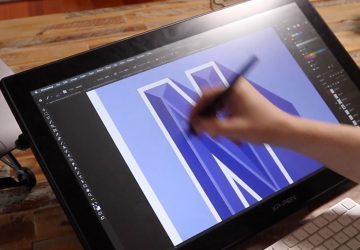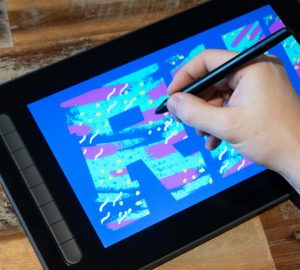Today, as a freelance designer there are a variety of ways you can work. You can either;
- Be a solo freelancer managing your own clients, or
- Be freelance through design recruitment agencies and work on location
Now these are two very different ways of working as a freelance designer. However, being a freelancer, you have the freedom and flexibility to undertake either of these options, or even both.
What’s the difference between design recruitment agency freelance and solo freelance?
Finding work
Probably the most significant difference between the two is how you find work. No matter what type of freelancer, you’ll always be looking for work. However, the way you find work can change depending on which type of freelance you undertake.
Design recruitment agencies typically chase the clients to get them on their books. They then use the roster of freelancers on their books to do the work.
When a freelancer registers with a design recruitment agency, at some point they’re going to get a call directly from an agent with a proposition for a contract. So in this scenario, instead of having to look for the work, the work can find you.
Where you work
95% of the time, a freelancer working with design recruitment agencies is required to work on location, at the office or studio that’s commissioned the contract.
Clients prefer a freelancer to work at their location to work closely with the client, take direction, work within the parameters of the company, the team and the brief, to carry out the creative task until it’s complete and the contract is over.
Working a day rate
Now this is a big one! A design recruitment agency freelancer will typically be working a day rate. Before taking on a contract, a freelancer and the client agree to a day rate. This is then the rate they receive no matter what happens. It is then up to the client to utilise and manage a freelancer. So everyday a freelancer works, they’re getting paid even if they don’t do any work.
Another thing to consider is that as well as a freelancers day rate, the creative recruiter earns commission. Whatever the day rate, the client will actually be paying more, and it’s that difference which an agent will earn.
Taking direction from a creative director, art director or senior personnel
A freelancer working on location is required to work with the client within the parameters of the company, the team and the brief, to carry out the creative task until it’s complete and the contract is over.
This requires the freelancer to work within the current structure of the company and take direction from senior members of the creative team. Now, this varies depending on the freelancer’s experience and the role the freelancer is expected to undertake.
Solo freelancers can have a lot of freedom on their projects. However, if a freelancer works at a design studio, it’s common that someone will be leading a project and the freelancer will have to work under someone else’s direction.
Now I have experienced both of these situations. Earlier in my career when I was a junior to middleweight designer, I’d join a team and take direction from senior creative members. However in recent years, having become more senior, I have now started to lead my own projects, with less interference from creative directors or art directors. These days I tend to have more freedom and control over my own design.
Working time
Now this is another big one. A design recruitment agency freelancer will work between the working hours of the studio they are working with. When the day is done, they are done. This differs to working as a solo freelancer, where a client usually won’t pay until they are satisfied. They may request updates or tweaks, which could take the project over the agreed time limit.
Sometimes a freelancer is required to work overtime to get a job done. In this scenario they can claim this time as overtime, so they can still get paid. In my experience, a client will typically extend a contract for a few more days or weeks if there is more work to be done. So in this instance you get paid for exactly the time you work.
Getting paid
How a design recruitment agency freelancer is paid differs slightly from solo freelancers. Unlike solo freelance where you will submit an invoice to your client directly, a design recruitment agency freelancer is required to submit a timesheet and invoice directly to the design recruitment agency.
So in this instance, a freelancer will not have to chase the client for payment or speak to them about payment at all. It will be upto the design recruitment agency to process an invoice.
Speed of payment
In this instance, it’s up to the design recruitment agency to manage and worry about the payment from the client. Depending on the terms and conditions of the design recruitment agency, the freelancers invoice can be paid as soon as within a week, fortnight or month of receiving payment from the client.
Contracts
A design recruitment agency freelancer won’t have to enter into any formal contract with the client. This means a freelancer won’t be liable for anything other than to carry out the project to a satisfactory standard.
So in this instance, working as a design recruitment agency freelancer is fairly risk free. If anything bad should happen, for example the freelancer fails to meet the standards expected or fails to finish the work within the timeframe, it won’t be something the freelancer will have to deal with.
This will typically fall back on the design recruitment agency to handle. However, if this does happen it could spoil the reputation and working relationship between design recruitment agency and freelancer.
Now on occasions a freelancer will have to sign a Non-Disclosure Agreement (NDA) with the client. This is a promise not to disclose any private information, share business secrets or let anyone know of a secret project they may be working on. Now I believe if you were to break that contract you would be liable.
No pitching
As a solo freelancer there are a variety of ways one many get work; through word of mouth, pitching or showcasing their portfolio. However, with design recruitment agency freelance this is typically only done through a portfolio.
With design recruitment agency freelance, you generally don’t have to pitch for work or get a chance to chat with a client beforehand. If an agent representing a freelancer puts them across to a client, it is with their portfolio and CV.
It is currently very common to submit a PDF portfolio or a website, which can easily be shared through email and kept on the design recruitment agency’s database. In this instance a client is looking at what you can do for them, so will be looking at what you have done in the past to prove what you can potentially do for them on a job.
Compared to solo freelance this is a much simpler approach, though you will need to put lots of work into your portfolio to make it look as good as possible, as there will be competition.
Minimal administration
Design recruitment agencies are responsible for all the administration for a contract, therefore, a design recruitment agency freelancer won’t be required to get involved in any administration.
This leaves the freelancer to focus primarily on the creative task and do a good job. The only administration required by the freelancer is to fill out a timesheet once a week and send an invoice to the design recruitment agency to process.
No pressure to maintain clients
As a solo freelancer, there is typically a desire to keep clients as this will keep the revenue coming in and help to generate potential work in future. This is not typically the case with design recruitment agency freelance.
During the course of a year, a design recruitment agency freelancer may undertake several contracts with several different studios. As mentioned earlier, work typically comes to the design recruitment agency freelancer. Once a design recruitment agency freelancer is available, it won’t be long before their agent is calling to offer them new opportunities. This diminishes the anxiety solo freelancers feel to maintain clients.
To recap
The big differences between design recruitment agency freelance and solo freelance are:
- Finding work
- Where you work
- Work a day rate
- Having to take direction from senior personnel.
- Working time
- Getting paid
- Speed of payment
- Contracts
- No Pitching
- Minimal administration
- No pressure to maintain clients
So what do you think about working as a design recruitment agency freelancer when compared to solo freelance? Are there other differences you can think of? Have you worked as one, or both? Let me know in the comments below!








